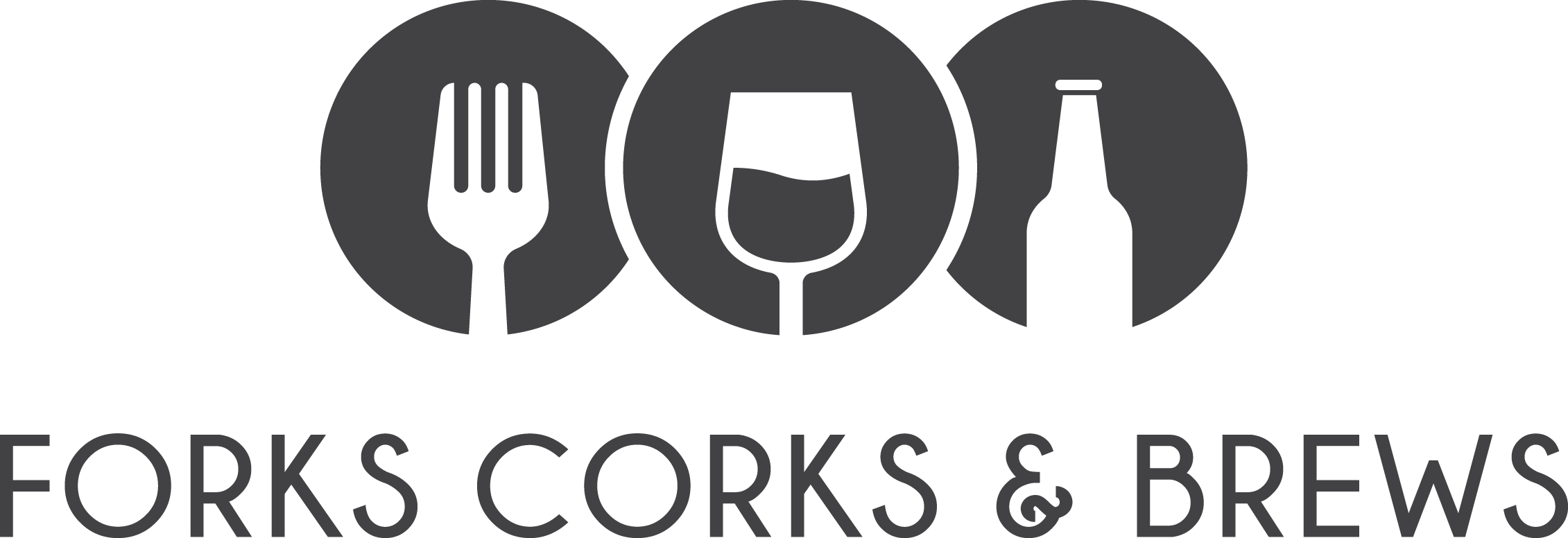If you are wondering whether or not you can stain a charcuterie board, the answer may surprise you. It depends on why you want to stain it. To put it simply, yes, you can stain a charcuterie board.
Is your charcuterie board too light and you want to make it darker? Are you wanting to add a finish to the board to protect it? Do you want to make sure your charcuterie board is safe to place food directly on it? Or, is it all of the above?
What Stain Will Make a Charcuterie Board Darker?
We have found a couple of options when you want to darken your light colored charcuterie board. Here are the top two stains for charcuterie boards that are natural and food safe.
We used different concentrations of coffee and tea for our natural food safe stains on three different types of wood: beech wood, maple wood and oak wood.
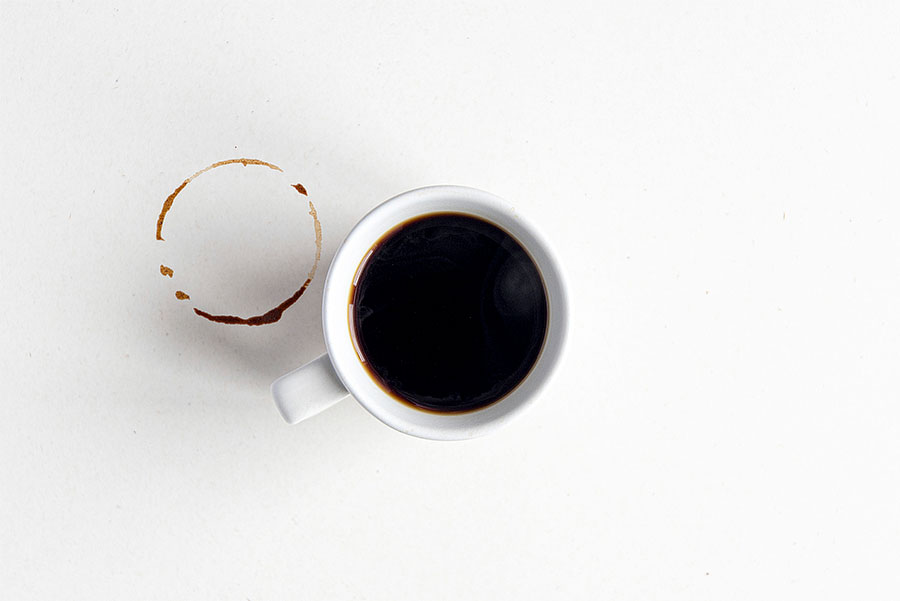
1. Coffee
Have you ever seen that dark coffee ring left behind on your cutting board, counter, or butcher block? Actually, coffee makes the perfect wood stain for a light colored charcuterie board. It just takes some time and patience to get the shade you are looking for.
- First make sure there is no food residue on your charcuterie board. Ideally your wood board is brand new and it has never been used.
- Then make sure your board is dry and clean.
- Now make a strong cup of coffee with your electronic coffee maker or your french press. Let the coffee cool. If you want an extra dark stain add coffee grounds to your coffee or espresso.
- With a scrap piece of wood test for darkness. We used beech, maple, and oak wood boards.
- Use a clean rag, dip it into the coffee or tea stain, and gently wipe your board with the stain, not soaking the board. Wait five minutes to check the color and reapply if necessary.
- Allow to dry for an hour. To speed up the drying process you can use the warm setting on a hair dryer and blow the warm air over the wood boards.
- Once your board is completely dry sand the board to get a soft finish.
- Finally oil and seal your board with food grade oil or wood conditioner.
- You can repeat the above steps with espresso and tea.
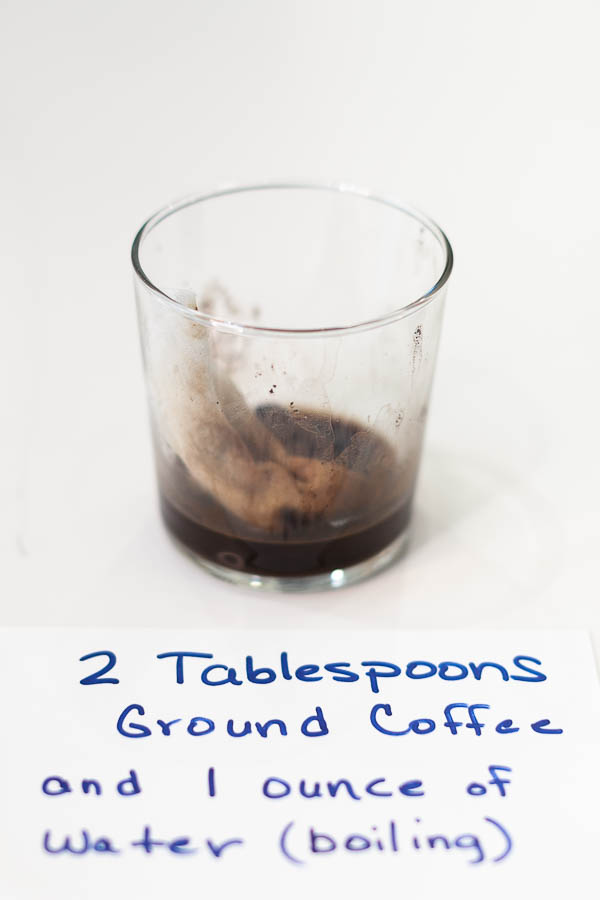
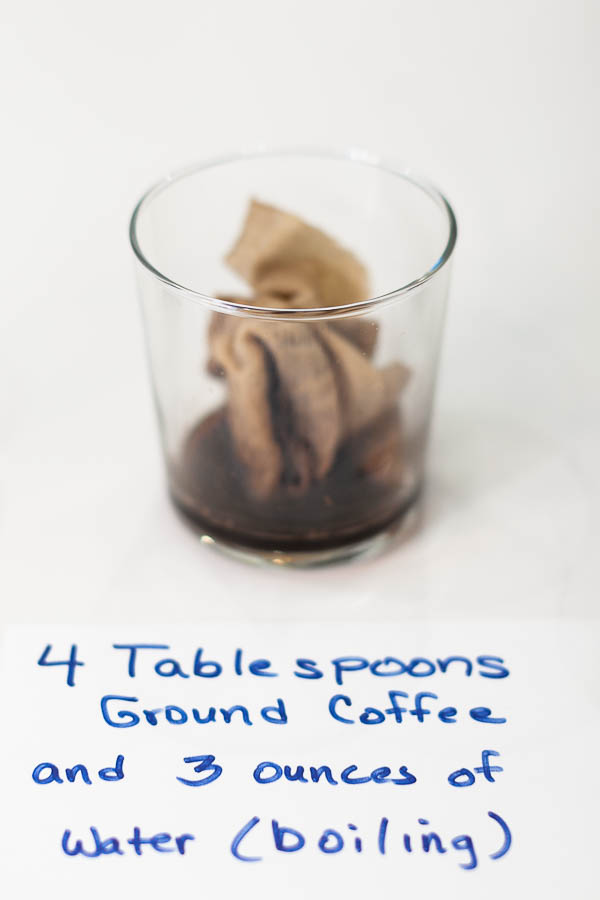
2. Espresso
Espresso works the same as coffee, yet gives you a darker look. As you might expect, espresso works quickly. Follow the basic steps as for staining your charcuterie board with coffee.
- Clean the board, removing all food residue
- Dry the board
- Make a strong cup of espresso
- Let it cool
- Test for darkness on a scrap piece or on the bottom of your board
- Using a rag, dip it in the espresso
- Wipe it on your board
- Allow to dry
- Adjust for darkness, realizing you may need to reapply the espresso
- Gently sand the board
- Oil and seal the finished board
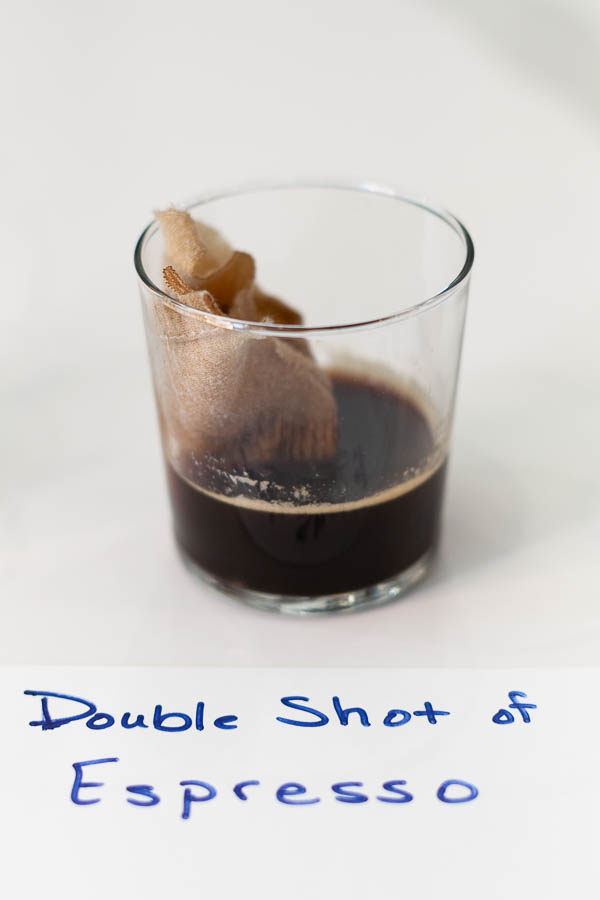
3. Tea
Want an inexpensive way to darken a charcuterie board? Tea will give you a slightly darker color than the color of your wood board. It is a natural and subtle way of staining a charcuterie board and will add a touch of elegance to a dull wood color.
- Clean your board
- Black tea bags work best
- Place tea bag or bags in hot water and allow to steep to desired color
- Remove tea bags from water
- Apply tea with a rag, not soaking the board
- Wait at least five minutes to check color and allow to dry
- Reapply if necessary
- Allow to dry for one hour
- Seal as desired
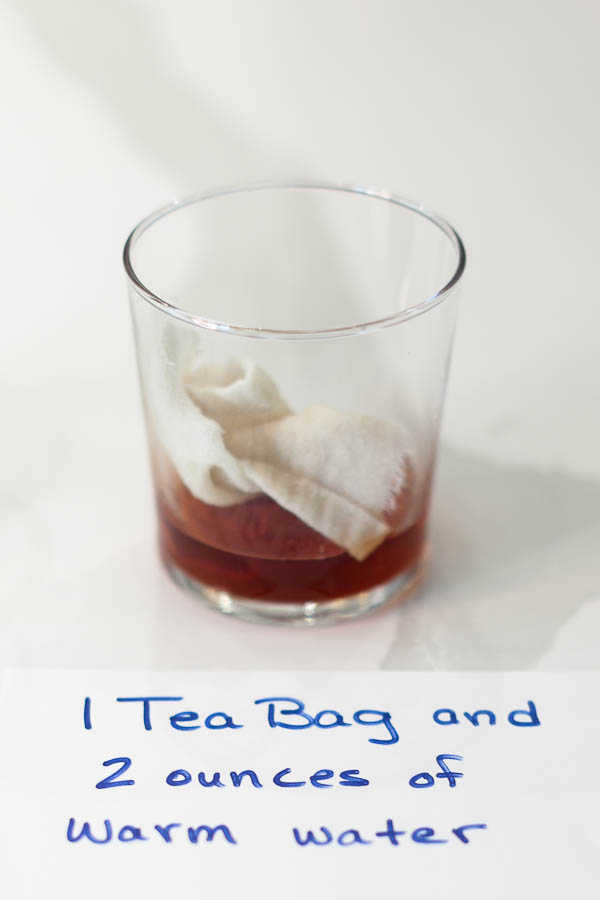
Will Stain or Conditioner Protect a Charcuterie Board?
Staining your charcuterie board changes the color of your wood board; it does not protect it.
Therefore it’s important to take proper care of your wood board and using food safe mineral oil or another food safe wood conditioner is part of proper board care.
Knife marks and scratches give bacteria and food particles a place to hide. Conditioning your wood board will make it easier to clean and will keep it safer to use.
High quality balms make the wood fibers swell and thus healing scratches and knife marks. Here are some ideas and why they may or may not be the best choice when staining a charcuterie board.
1. Butcher Block Conditioner
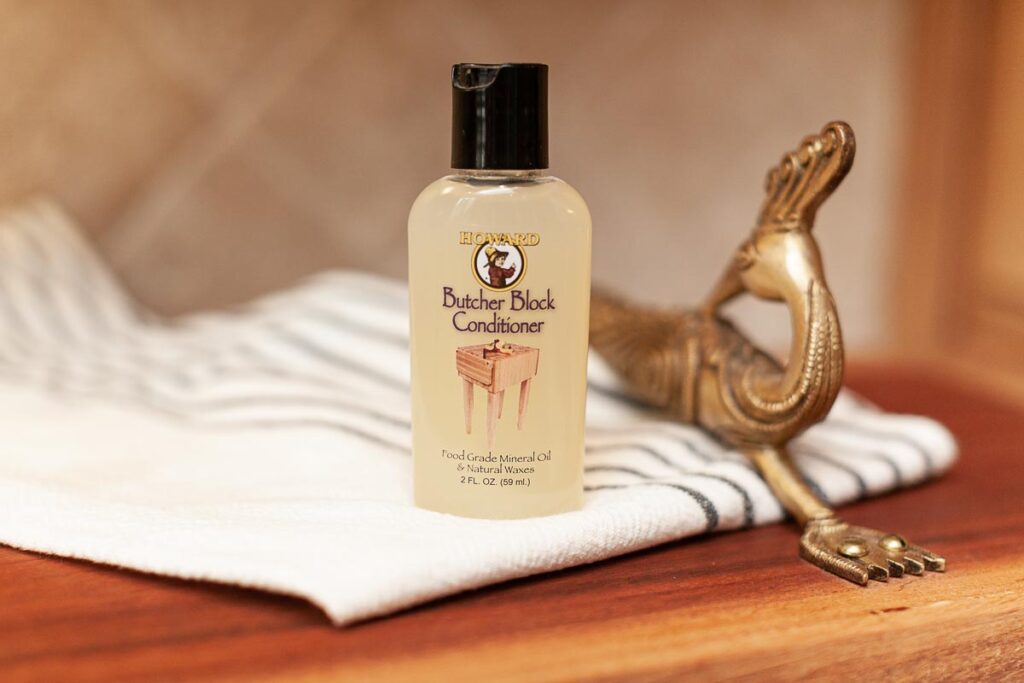
This is a food grade mineral oil and natural waxes. It is our go-to protection for charcuterie boards. While it doesn’t actually stain a charcuterie board, it will darken slightly.
Conditioning your wooden boards means oiling them. It’s the last step in proper care for kitchen items made from wood. You should condition your wooden utensils and wooden bowls as well.
As a rule of thumb oil your wooden boards every 4-6 weeks or after every 3rd or 4th use. Stay away from vegetable oils; they are for cooking only.
Pros:
- Safely protects wood surfaces that come in contact with food
- Ideal for butcher blocks and charcuterie boards
- Penetrates the wood
- Uses pure USP food grade mineral oil
- Includes water resistant beeswax and carnauba wax
- Prevents drying and cracking
2. Tung Oil
Tung oil is a good option and readily available. However, this may stain and give your charcuterie board a slightly different color.
Pros:
- A finishing oil
- FDA approved for food contact
- Contains no VOCs or additives
- Penetrates into the wood without building up
- Boards look natural
- Repels water well
- Scratch resistant
Cons:
- Usually needs to be thinned for smooth application
- Needs seven to 10 days to partially cure
- Requires 15 to 30 days to fully cure
3. Linseed Oil
Pros:
- Protects from scratches and dents
- Good at repelling water
- Nontoxic
Cons:
- Finish will darken over time
- Can bleed out of wood in high heat
- Protection is not as good as Wood Wax or Tung Oil
- Water based stains might raise the wood grain
- Try not to get your charcuterie board too wet
- If the grain is no longer smooth, you will need to use 220 grit sandpaper to lightly smooth out the grain
- Do not use a traditional wood stains as they contain harmful ingredients that could contaminate food
- As noted in our video in order to keep your board the color you want you may need to do several applications of stain.
Our Conclusions
At the end of the video you will see that we added some coffee grounds to the espresso and used that as a third application. This was our ideal stain for all three types of wood.
We concluded that our ideal stain was espresso with coffee grounds or concentrated coffee from a french press with coffee grounds.
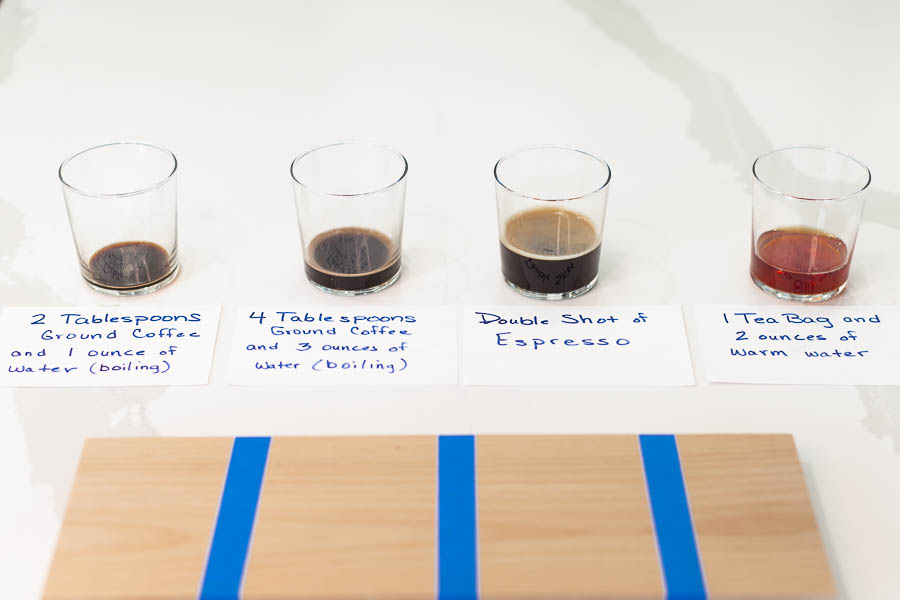
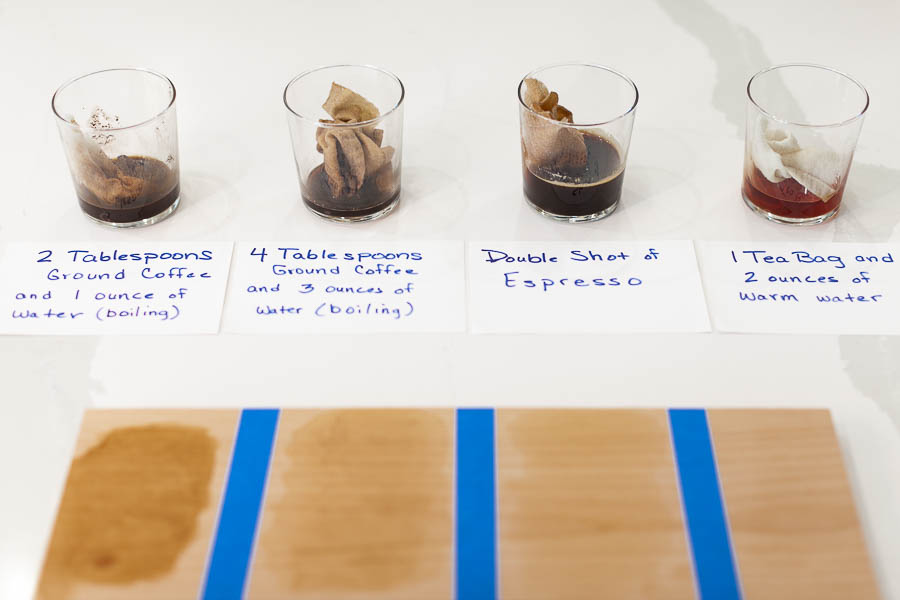
If you are looking for suggestions on how to clean your wood charcuterie board take a look at our step by step process on how to clean a charcuterie board.
